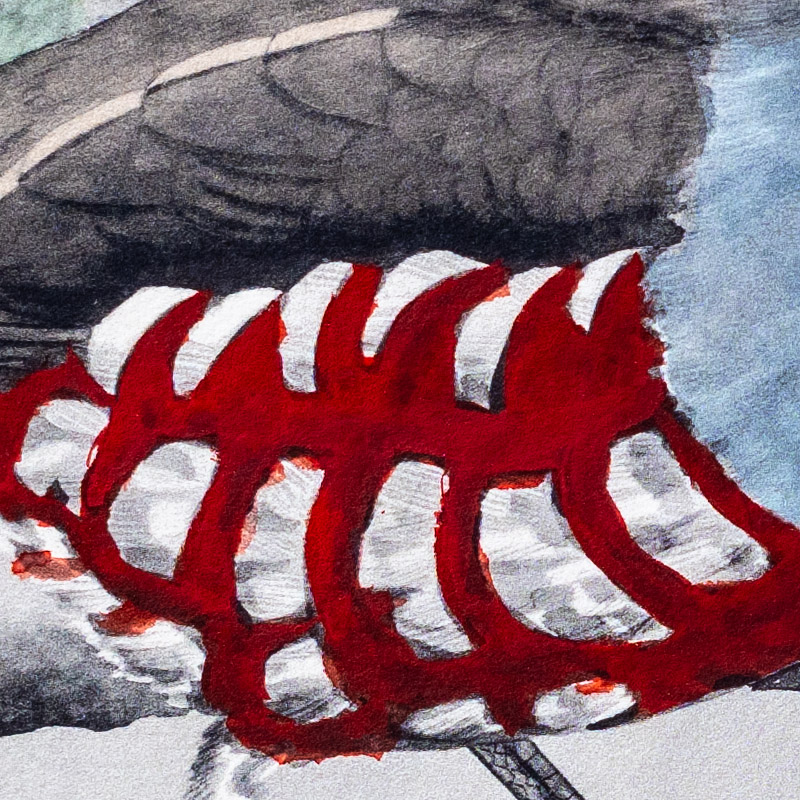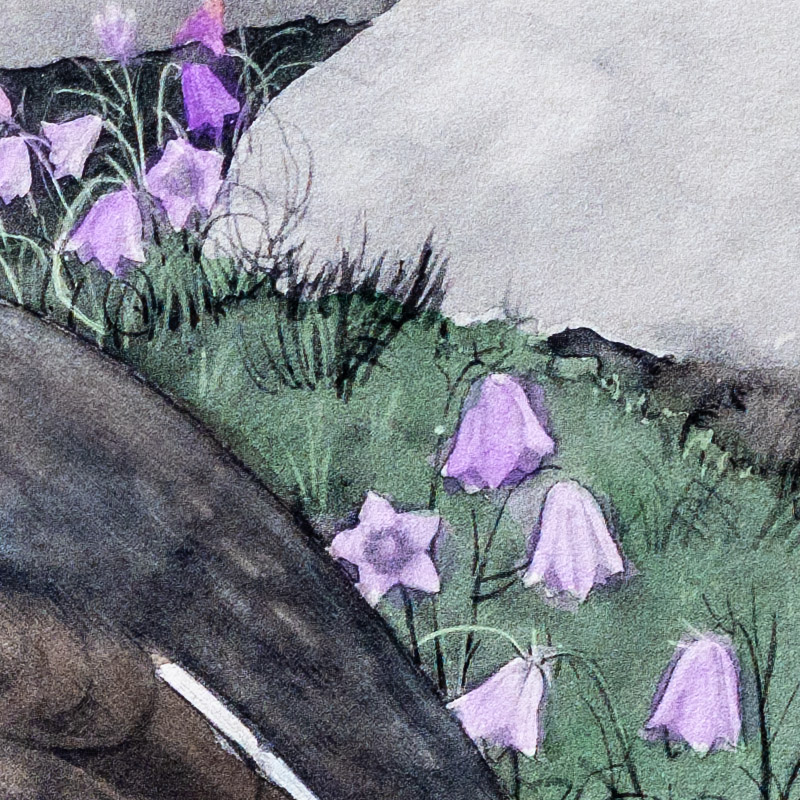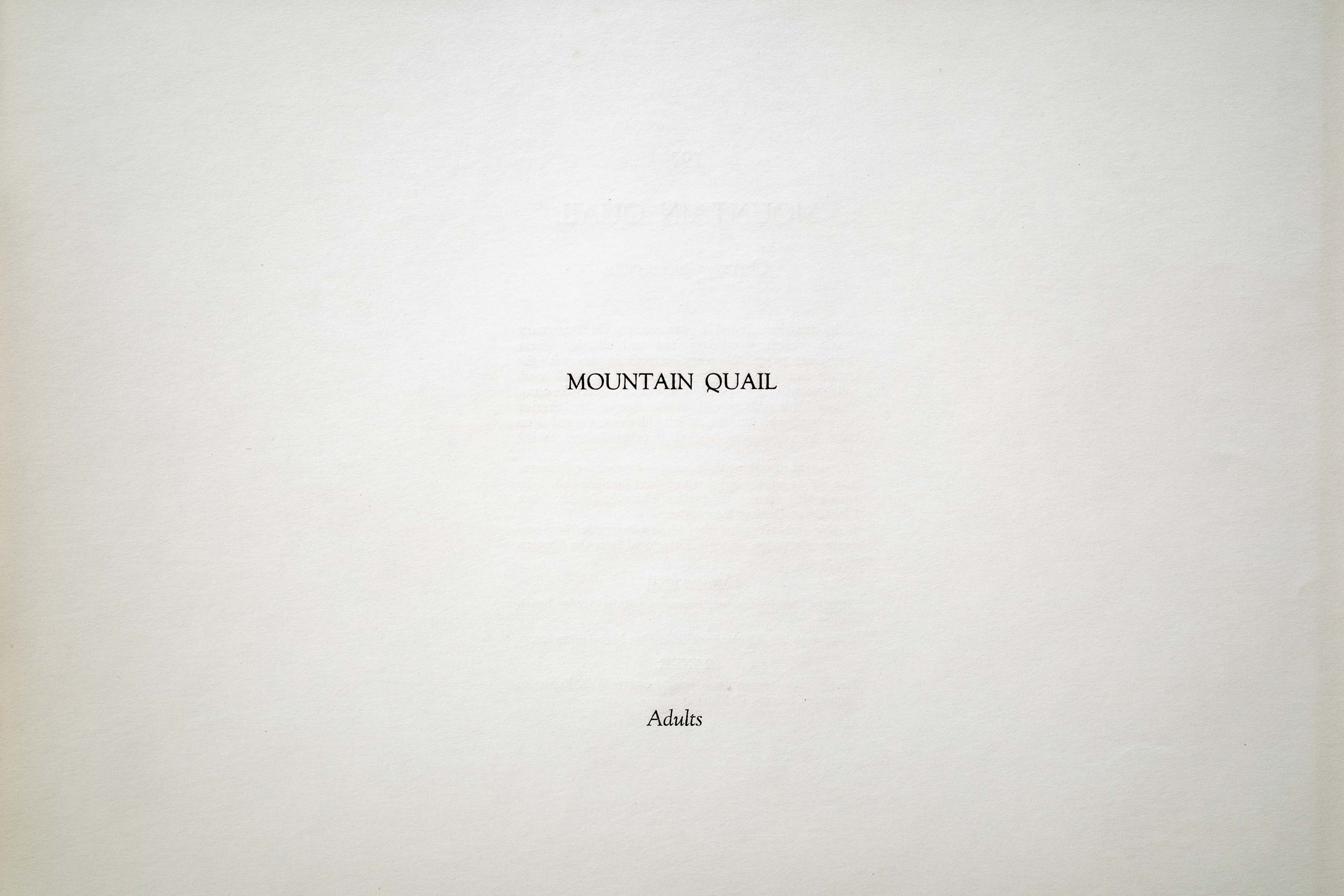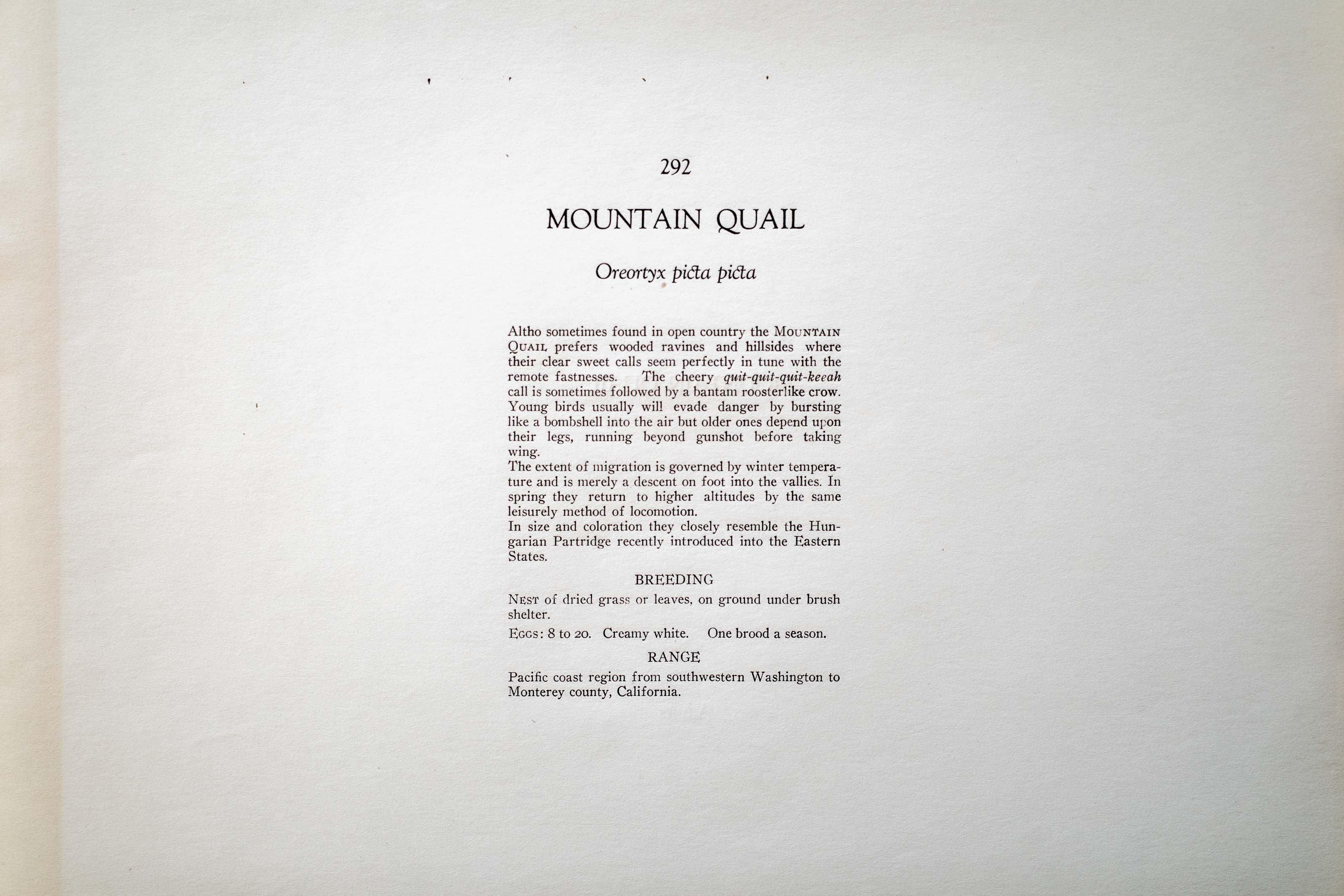






1911
1930
5
292
A team of dedicated board members, volunteers, and student interns has published every page in Volume 9. This volume includes 360 images of paintings and lyrical descriptions of birds, now available online for everyone to enjoy anywhere in the world. This is a monumental task. Each volume requires approximately 400 hours to photograph, edit, transcribe, catalog, and publish online. We need your support to complete this work.
If you're tech-savvy, have a good eye, are meticulous with details, and love structured data, please consider volunteering by emailing us at hello@rexbrasher.org.
We encourage all bird lovers and supporters to consider a monetary donation to support our mission to make Rex's work available for everyone. You can provide a one-time or recurring donation online.
Altho sometimes found in open country the MOUNTAIN QUAIL prefers wooded ravines and hillsides where their clear sweet calls seem perfectly in tune with the remote fastnesses. The cheery quit-quit-quit-keeah call is sometimes followed by a bantam roosterlike crow. Young birds usually will evade danger by bursting like a bombshell into the air but older ones depend upon their legs, running beyond gunshot before taking wing.
The extent of migration is governed by winter temperature and is merely a descent on foot into the vallies. In spring they return to higher altitudes by the same leisurely method of locomotion.
In size and coloration they closely resemble the Hungarian Partridge recently introduced into the Eastern States.
NEST: of dried grass or leaves, on ground under brush shelter.
EGGS: 8 to 20. Creamy white. One brood a season.
Pacific coast region from southwestern Washington to Monterey county, California.